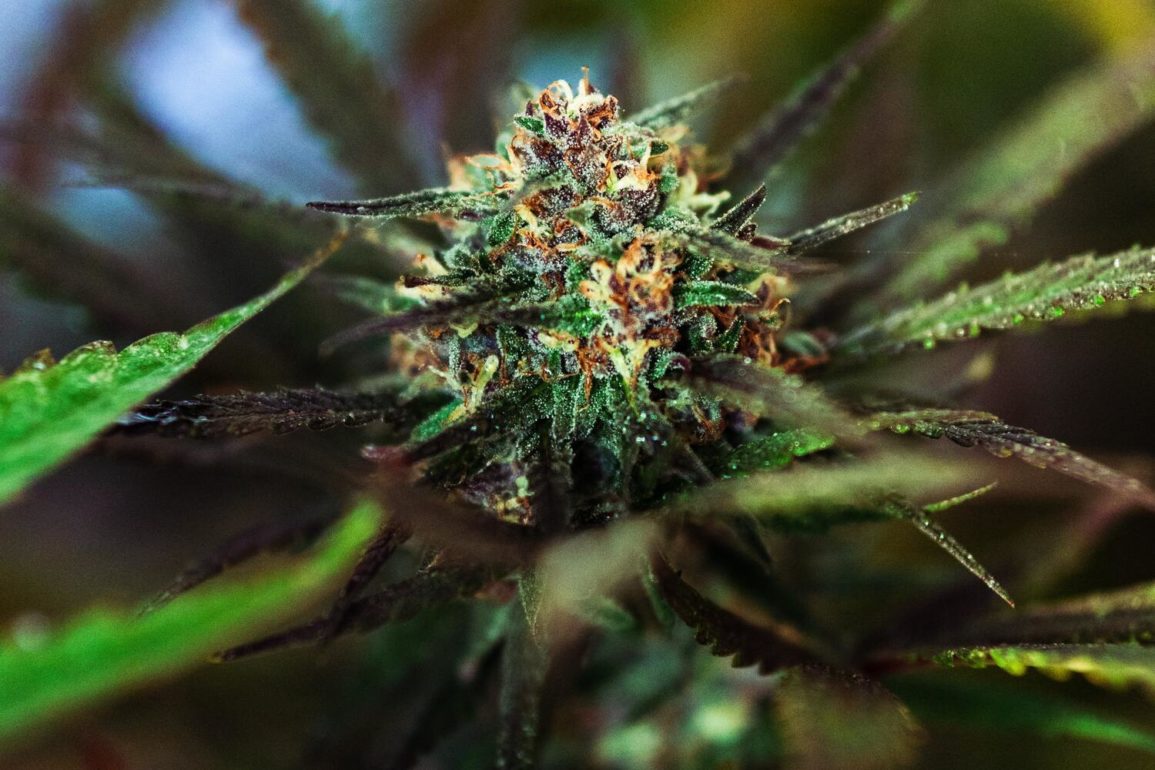Cannabidiol (CBD) and tetrahydrocannabinol (THC) are two of the most important cannabinoids found in varieties of cannabis. Cannabinoids are a group of plant compounds known to provide your mind and body with a range of positive benefits. You find both cannabinoids in hemp-derived and marijuana-derived products.
To get the most out of both these cannabinoids, as well as other beneficial plant compounds, you need to know exactly how much you should be consuming.
With so many different cannabis products, each with varying levels of CBD, THC, and other plant compounds, it’s like navigating a minefield.
According to a recent study, many users across the US and Canada are unable to determine the number of cannabinoids present in their cannabis products.
Let’s take a closer look.
TL;DR
- A study of 6,471 respondents across the US and Canada showed shocking results
- Only 10% of users were able to identify the THC levels in their dried cannabis products, under a third didn’t know how much CBD or THC was in their cannabis products, and many reported unrealistic cannabinoid levels
- Not knowing how much CBD and THC are in your cannabis products is concerning and poses many issues e.g. too much THC can cause a scary high and too much CBD can result in going over your recommended daily intake
- Is the cannabis product derived from hemp or marijuana? What does the Certificate of Analysis (COA) say? These are questions you should be asking yourself
A recent study shows users aren’t aware of how much CBD and THC are in their products
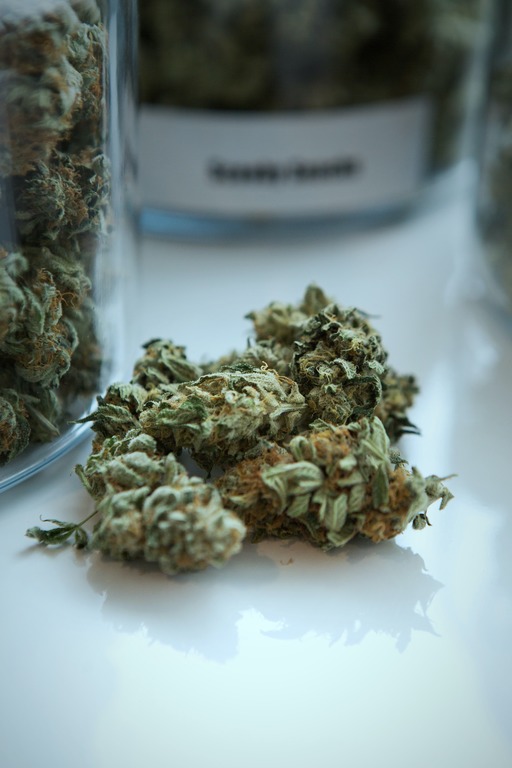
A recent study attempted to gauge how much consumers knew about what is in their cannabis products, with a specific focus on CBD and THC content in dried cannabis flower, edibles, vapes, and topicals.
The data was collected online via surveys between August and September 2018. The pool of respondents was large, totaling 6,471.
Of these 6,471 respondents, 2,354 were located in Canada before recreational cannabis was fully legalized, 1957 from US states that had not yet legalized recreational cannabis, and 2160 from US states that had legalized recreational cannabis. Each location had legalized medical cannabis. All users self-reported to have consumed cannabis within 12 months prior to the study.
The results of this study are shocking
- Only 10% of respondents were able to determine the THC level in their dried cannabis flower
- Across all three locations, just under a third of respondents were unable to determine the CBD and THC levels in their chosen cannabis products
- Many users reported disproportionate and unrealistic levels of CBD (more than 20%) and THC (more than 30%)
- Interestingly, consumers in US states with legalized cannabis were more likely to recognize the CBD:THC ratio than in Canada
The problem with not knowing your cannabis product’s CBD & THC levels
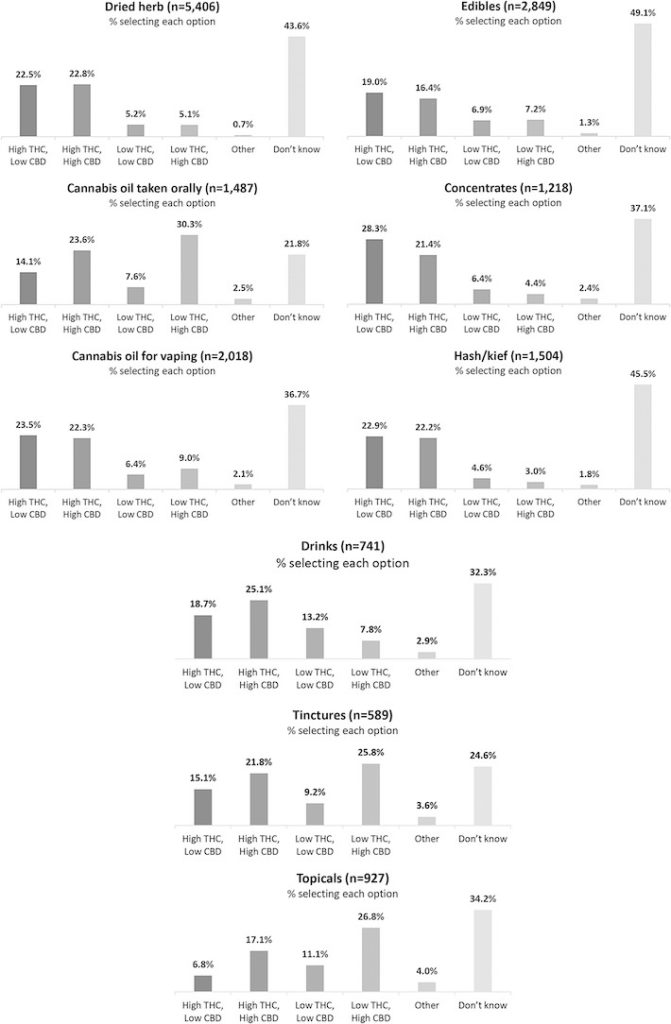
High-THC consumption can come as quite a surprise (and not always a nice one)
THC has its benefits, for sure. It can alleviate symptoms of pain, reduce nausea, decrease sleep interruptions, and aid appetite stimulation, as well as work together with other cannabis compounds (CBD, CBN, terpenes) for general health and wellness (entourage effect).
Recreationally, THC can heighten sociability, increase energy, and sharpen cognitive focus. It can also boost creativity.
However, despite these excellent physiological and recreational benefits, THC consumption can produce fear-driven anxiety effects, especially when consumed in higher quantities than you’re used to.
Studies show THC interacts with cannabinoid 1 (CB1) receptors located across various regions of your brain, specifically the amygdala, hippocampus, cerebellum, prefrontal cortex, and striatum.
THC’s interaction with your amygdala is one of the primary reasons why an increase in anxiety and anxiety-related symptoms occurs.
Functionally, the amygdala is responsible for emotion and behavior, most notably fear and threat perception. When high doses of THC hit the amygdala’s CB1 receptors, a wave of endocannabinoids targets this region, resulting in overstimulation.
This overstimulation is essentially THC’s way of hijacking your amygdala, producing more endocannabinoids than necessary.
If you’re in a position where you’ve consumed way too much THC, there are ways to manage these scary and negative effects.
How to reduce THC-induced fear and anxiety
There are several ways to reduce THC-induced fear and anxiety. Most methods require some patience and an understanding that you’re not experiencing anything life-threatening (even if you think it is).
Finding your inner zen among the fear

Before you start panicking, recognize the fear you feel is simply a byproduct of too much THC. Your thoughts are racing faster than the rational side of your brain can keep up with. No matter how you feel in this present moment, the chance of there actually being any form of threat is minimal.
We recommend finding a quiet room (low-light preferably), a glass of water, and a pair of headphones (calming music is always a good choice). Take slow, deep breaths in through your nose and out through your mouth. It may take 15-30 minutes before you notice a positive change in your thought cycle. Be patient.
If you have a bed, sofa, or chair to relax in, use it. Falling asleep is very beneficial and will reduce some of the panic and paranoia symptoms.
In case of fire, break open a bottle of hemp-derived CBD oil (or any other CBD product)
Another often overlooked way to possibly reduce THC fear and anxiety is consuming hemp-derived CBD oil with broad-spectrum or isolate extract.
CBD itself functions as a negative allosteric modulator i.e. it changes the shape of CB1 receptors, lessening THC’s ability to bind to them. This causes a reduction in receptor activity and, by extension, anxiety symptoms.
Remember, CBD consumption isn’t a miracle cure. It won’t magically rid you of overwhelming THC effects. It will, however, soften the blow a little.
Consuming too much CBD can cause you to go over (or under) your recommended daily intake
Your daily CBD intake is important. Beginners often start with 15-20 mg per day, while more experienced users can go up to 100-250 mg per day.
Let’s say your optimal daily CBD intake is 50 mg per day and you need two 25 mg CBD capsules, one in the morning and one and night. If you purchase a bottle of CBD capsules with 50 mg of CBD per capsule, you’re consuming double what you should be.
Now, 50 mg of CBD might not seem a lot but the effects might be noticeable, especially if you’re just starting out.
Make sure you read the label correctly before purchase. If in doubt, contact the brand’s customer service team.
And don’t forget mild but unwanted CBD side-effects
Despite the World Health Organization (WHO) deeming CBD as totally safe and tolerated in humans, mild side-effects do occur. These side-effects are temporary and non-life-threatening. Most subside within a few hours.
The most common side-effects include:
- Dizziness
- Drowsiness
- Fatigue
- Headaches
- Stomach complaints
- Appetite reduction
- Nausea (in rare cases)
- Vomiting (in rare cases)
These side-effects commonly happen when you consume too much CBD or go way above your daily intake limit.
The best ways to find out CBD and THC content are often the simplest
Marijuana-derived vs hemp-derived products
The simplest way to gauge the CBD and THC content in your cannabis product is by determining whether it’s derived from hemp or marijuana.
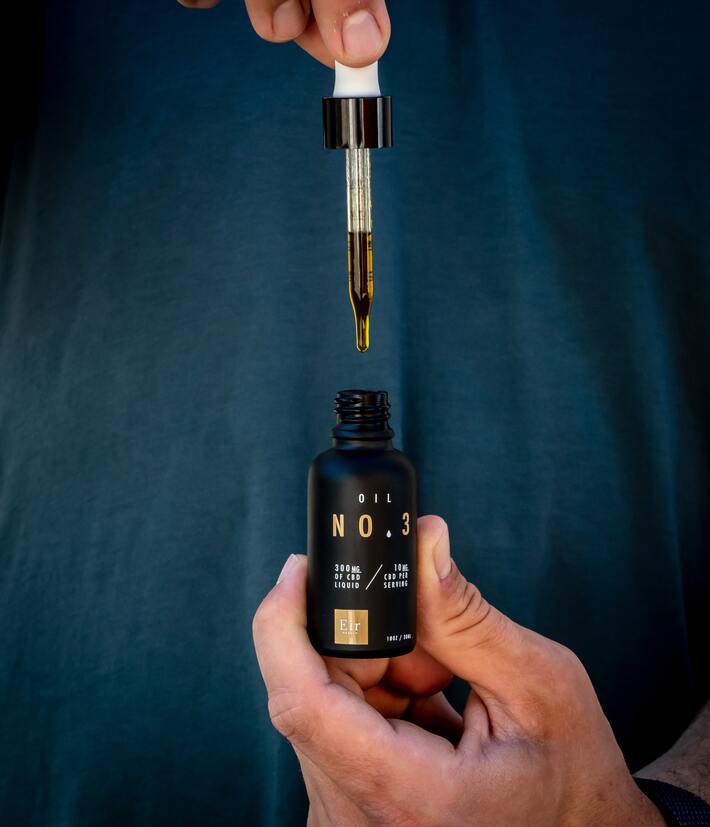
Hemp-derived CBD products carry more CBD than THC. Full-spectrum hemp-derived CBD products typically contain below 0.3% THC. Not enough to cause a “high” or “intoxication”.
Marijuana-derived products carry far higher levels of THC. Marijuana flower, for example, typically contains 15-20% THC on average (up to 30% THC in stronger, more potent strains).
Always read the packaging. If your product has “hemp CBD” or “hemp-derived” on it, you’re looking at a high-CBD, low-THC product incapable of causing any intoxication.
If your product says “cannabis”, “high THC” or “marijuana” on it, you’re looking at a THC-rich product designed to cause intoxication.
Hempseed oil
Hempseed oil (often shortened to hemp oil) is very different from cannabis-derived oil.
Made using only the seeds of hemp, hempseed oil carries very few cannabinoids (if any). Instead, you’ll find high quantities of omega-3 and omega-6 unsaturated fatty acids, as well as other valuable nutrients and active compounds. Good for skin care and wellness. May tackle common skin complaints such as:
- Eczema
- Dermatitis
- Psoriasis
- Acne
- General skin dryness
If you’re looking for CBD for therapeutic or medicinal benefits, avoid hempseed oil and go for a hemp-derived CBD oil or cannabis-derived oil instead.
Hemp-derived CBD products to try
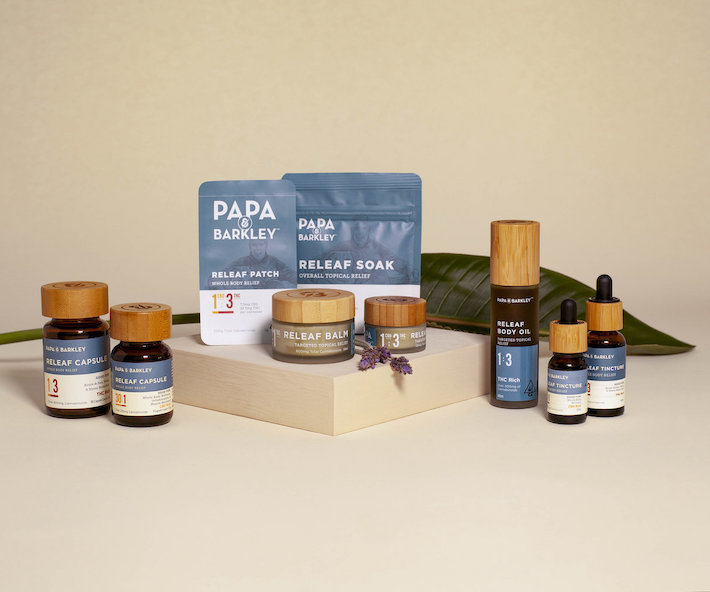
Depends entirely on what you want to use hemp-derived CBD products for.
CBD Oil: If you require general physiological health and wellness, we recommend a simple low-to-medium strength CBD oil. Somewhere around 250-750 mg per bottle. Best for beginners. Consume 1-2 drops morning and night for best results. Up the dose or purchase a stronger strength if you have more severe symptoms. Sleep issues can be combated with a specialized CBD oil carrying melatonin or other sleep-enhancing botanicals.
CBD Gummies: Do you prefer sweet-flavored products? Hemp gummies are also worthwhile, especially if you require a slow, gradual dose of CBD all throughout the day. To be honest, any CBD edible will suffice here. Expect the effects to begin within an hour and continue for at least 5-6 hours depending on dose and strength.
CBD Candies: We also recommend CBD candies. They were some of the most trending CBD products of 2020, particularly ones marketed for stress relief and relaxation. Good for pandemic-related anxiety.
CBD Flower & Concentrates: Need something a little more immediate? Smoking CBD hemp flower or vaporizing CBD concentrates is the way to go. These directly enter the bloodstream via your lungs without needing to travel through your digestive tract to be broken down by your liver. You should experience effects and benefits within 5-10 minutes.
CBD Topicals: If skin complaints are causing you daily issues, a CBD topical is the way to go. You have a choice of CBD lip balms (or skin balms), CBD salves, CBD creams, CBD massage oils, and CBD bath bombs.
Simply apply it liberally to dry, clean skin and let it do its magic. For mild-to-moderate skin complaints, a 500 mg CBD cream or balm is sufficient. For more severe problems, anything above 500 mg is perfect.
Remember, no matter which hemp-derived CBD product you go for, always make sure to purchase a carbon dioxide (CO2) extracted full-spectrum hemp extract (or a broad-spectrum if you don’t want any THC in your extract at all).
Full-spectrum CBD products carry a large range of beneficial plant compounds (cannabinoids, terpenes, flavonoids, alcohols, lipids, etc) that all work in synergy to promote enhanced physiological benefits (in theory).
Reading the Certificate of Analysis (COA) is vital
Reading a Certificate of Analysis (COA) is the most accurate way of determining the CBD and THC content of your cannabis product.
COAs are documents produced by third-party laboratories specializing in cannabis testing and evaluation. All COAs show how many cannabinoids and terpenes are present in the extract, as well as the quantity of each (usually marked as a percentage).
If in doubt, always contact the brand’s customer service team
If your chosen cannabis brand has no publicly-available COAs or you’re having trouble understanding them, contact a customer service representative. While COAs aren’t required by law, legitimate CBD brands will post them on their websites (usually on the product pages).
If a brand fails to post COAs publicly, it might be a red flag. Again, contact a customer service representative for further clarification.

